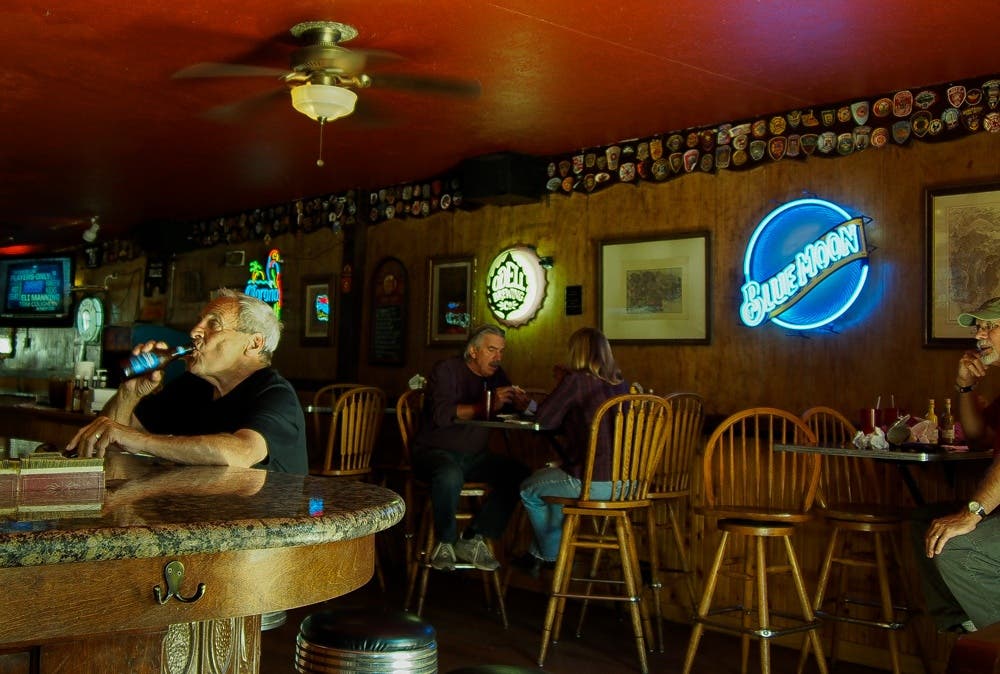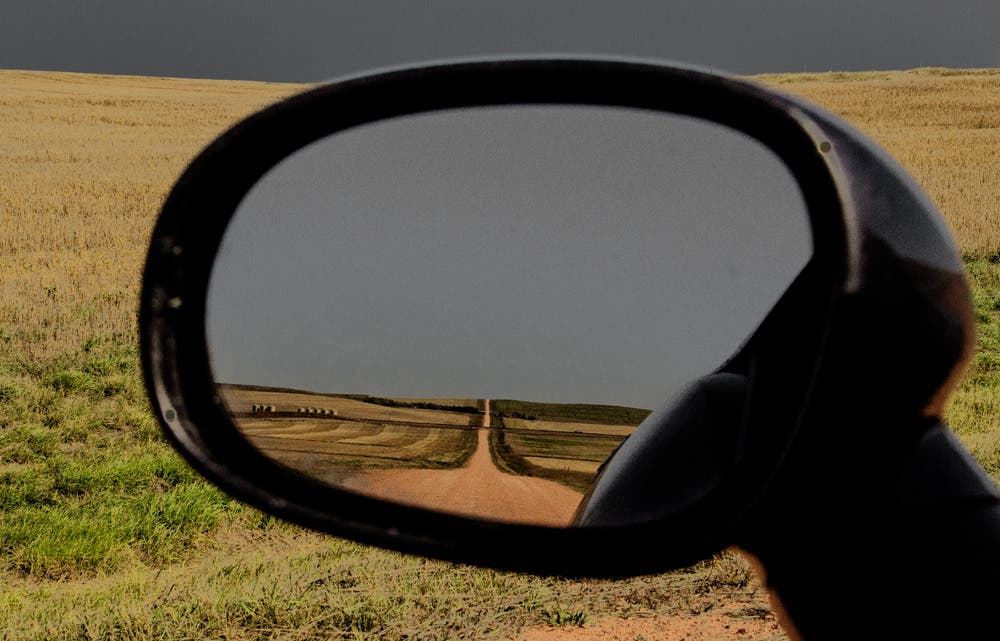We’ve taken more than our share of road trips, almost always with the idea of gathering images.
Sometimes it’s been for specific projects, like filling photographic gaps in a book, as we did when we were working on Focus on Travel. Other times, we’re on a personal mission, like getting to see all the U. S. national parks. And then there are road trips we take just to explore an area and see what we find.

Whatever prompts you to take a road trip, you’ll want to come back with interesting photographs, not just to document what you saw but to capture the spirit of what you experienced.
Here’s some advice to make the most of your upcoming road trip:
Plan time for photography
Unless you have all the time in the world, you’ll have to plan your trip to fit the time you have. Figure out the places you want to visit, keeping in mind that you may not be going on this trip alone. Leave time for sightseeing but also block out opportunities for picture-taking. Unless you’re just snapping pictures, you’ll need stretches of time to focus on your photography.

Consider your travel partners
If you’re traveling with a friend, a spouse or your family, check if they want to come along or would rather go their own way while you go off on your photographic pursuits. Even if they opt to come along, advise them to bring a book or game if they don’t share your enthusiasm for photography. These kinds of plans make for happier campers all around and prevent your road adventure from turning into a guilt trip.

Also, plan to include your companions in some of your photographs so you’ll have nice memories to share together — it’s so easy to forward digital photos either to the folks in your pictures or to family and friends back home. Get your fellow travelers into the act by taking shots of each other and remember to document things that may not automatically seem photogenic, like the great Italian meal you ate or the charming B&B where you stayed. Always take your camera along and make time for photography even during the most ordinary moments and you’ll have a very personal and appreciated collection of images.

Do your research
Check the route you plan to take to see the points of interest. The best way to do this is with an old-fashioned map. A GPS or the WAZE app is great once you’re on the road, but a map lets you see the big picture so you don’t miss something that’s only a few miles out of the way. For example, when we were at Zion National Park, we planned a day trip to Coral Pink Sand Dunes State Park, which turned out to be a fascinating and beautiful environment, quite different from the major attraction we came to see, and it gave us a chance to try a dune buggy. Also, use the Internet to look up anything you want to research — from places to stay to the times of sunrise and sunset. The better prepared you are in advance, the more relaxing your road trip will be.


Plan the gear you need to take along
If you’ll be driving from home in your own car, you’ll probably be able to take whatever gear you want, without regard to size or weight. But if you’re flying first, you’ll have to restrain yourself. Think about the type of images you plan to take. If you’re interested in flower photography, be sure to bring a macro lens; if you expect to see birds or other wildlife, take a long lens; if you’ll mostly be taking landscapes, bring zoom lenses in the 24-200mm range.

Plan a shot list. If you’re really ambitious, you might put together a shot list. This is a good exercise to help you think about what you expect to see and the gear you’ll need to capture it. It’s also a helpful reminder of what you are looking for so you don’t inadvertently forget about something. Or, in some cases, it can help you prioritize if you don’t have time to go for everything. Another option is to pick one or more themes for your trip. For example, you can collect shots of funny signs, unusual barns or silos, and some of the people who cross your path. Making such a list can also clue you into the equipment you’ll need to bring.

Check your photos every day to make sure your camera and lenses are working properly
If you can, download your images to a laptop so you can see them enlarged and find out if you need to do anything differently or if any adjustments or repairs are needed — a good reason to bring two camera bodies along for the trip. And take a few moments each day to clean you cameras and lenses to protect them and prevent possible breakdowns.

Be prepared to stop the car
Once you’re driving, keep the gear you’ll need inside the car, not in the trunk, so it’s ready to go at a moment’s notice. That’s because the journey itself is a very important part of your road trip and you’d be wise to keep your eyes open to wonderful or surprising sights along the way. There have been countless times when something unexpected popped up while we were on the road — a beautiful rainbow, a field in perfect light, or colorful wildflowers carpeting the area beyond the shoulder.

You can’t count on seeing anything comparable later on because these things are a matter of serendipity. Just stop the car in a safe spot and get the shot while you can. It’s a good idea to have someone else do the driving if you plan to do this, but even if you’re alone, it will only take a few moments to pull off the road, turn on your warning lights and grab your gear (it would be great if you had the foresight to put the right lens on your camera) so you can take those now-or-never shots.
And if you like finding the unexpected, plan some drives on the smaller roads — those blue highways — rather than sticking to the interstate. Stop and ask locals about scenic roads or special features to see in the area. Be adventurous and take that unpaved road or just follow your instincts and don’t be afraid to get lost. Exploring is part of the fun and the payoff is to find something worth stopping for.

Plan for sunrise and sunset shots
Everyone loves photographing at sunrise and sunset, but you won’t be where you want to be unless you plan ahead. Nowadays, you can use the Internet or various apps to look up the times of sunrise and sunset no matter where you are. You can even search for sunrise and sunset photos taken at your various destinations. Once you know the exact time, plan to get to the location 1/2 hour before sunrise or one hour before sunset (and plan to stay at least 1/2 hour after sunset, especially if there are clouds in the sky).
Decide where you want to be at those critical moments. You can do that with an Internet search or by doing some actual scouting at each destination. If you know how to find east and west, you’ll know where to find the sun in relation to various points that appeal to you. Most national and state parks have a loop road that let’s you preview their landscapes so it’s a good idea to drive that road and get a sense of what you want to capture.

Of course, you may need to hike in to get the shots you really want, so be sure to allow time to walk in if you want to be there before sunset. Also, if sunset conflicts with dinner time, think about eating early or packing along a picnic so hunger pangs don’t force you to quit too soon.
Go beyond cliches
Toward the end of the movie “The Guilt Trip,” Barbra Streisand and Seth Rogen, playing an over-protective mother and her underachiever son, stand at the edge of the Grand Canyon after driving all the way from New Jersey. Neither of them has seen the Grand Canyon before and they stand transfixed for a few minutes when the mother asks, “How long are we supposed to stand here?” They quickly agree that they’ve seen enough and move on.
We’ve known people who do such speed touring, stopping at each location long enough to take a selfie or a shot of the most typical scene before moving on. That’s not our idea of a good road trip.

Both your drives and your walks should take you off the beaten path and bring you into places that can’t even be glimpsed from the road. That’s your opportunity to have a very personal connection to the environment you’re in and to create images that are unique to your vision. Another way to come up with singular images is to push yourself to find new perspectives or different ways of portraying the places you’re in. Try putting the road into some of your images for a different twist. It definitely takes imagination but, if you’re planning a photographic road trip, you’ve already got that.
Happy trails to you!






